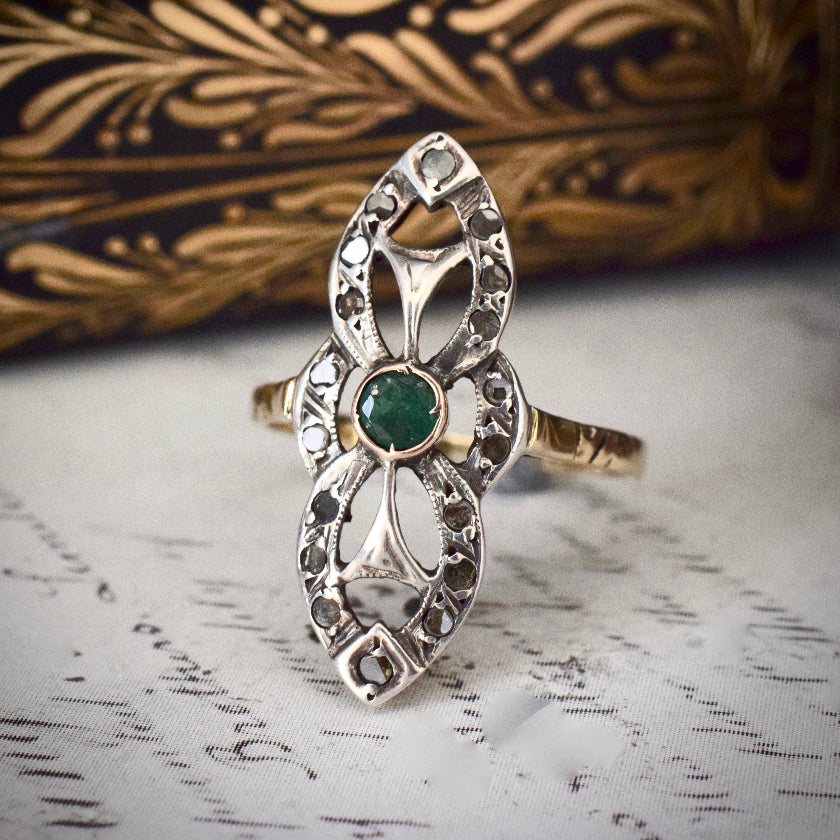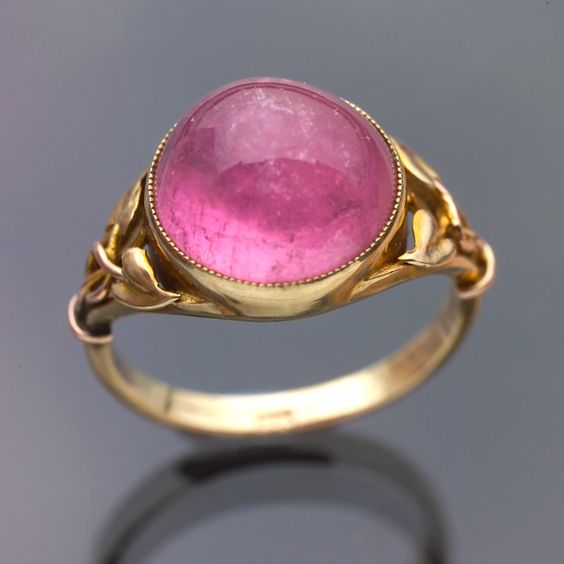Artificial, lab-grown, lab-made… we hear these terms used interchangeably to describe the process of creating gemstones in laboratories as opposed to natural creations.
As early as the ancient Egyptian civilisations, mankind have been imitating precious gems, using coloured glass and porcelain to convincingly replicate naturally occurring stones, a practice that would continue until the end of the 19
th century. Turquoise, Lapis and Coral were considered the most sacred, creating a market if you will for replications.
 Antique 15ct Rose Gold Man Made Ruby pre 1932
Antique 15ct Rose Gold Man Made Ruby pre 1932
(now available)
Towards the end of the Middle Ages, chemical elements were discovered and advancements in chemistry allowed for a greater understanding of the composition of gems, in particular the understanding that synthetic and natural occurring gems can be composed of the same elements and physical characteristics. Improvements in technology throughout the 19th century afforded the much needed techniques to synthesis gemstones; chemists were attempting to create stones with the same hardness and toughness of natural stones which would provide an excellent and inexpensive alternative for jewellers.
The very brilliant French chemist, Auguste Verneuil was a pioneer in the manufacture of synthetic gemstones. He is credited for developing several techniques including the flame fusion method (or Verneuil process) in 1893 to grow synesthetic corundum (ruby or sapphire). His technique is still used today to grow a variety of synthetic gems including spinel, rutile and strontium titanite (one of the costliest of diamond simulants).

The above diagram illustrates the major components involved in this process. Below is an overview of these steps:
- An aluminum oxide powder which, for ruby synthesis, will have a trace of chromium added.
- A flame through which this powder is dropped in which it is liquefied.
- A rotating "boule" (a rough form of synthetic corundum or spinel), which is the formation after the liquid drips through the flame and cools on the rotating seed, crystallising into a boule.
Created Gemstones
In the jewellery community, it is not uncommon to hear the term
‘created gemstones’ rather than
‘synthetic’; a synthetic stone however may be both real and not natural. Despite the fact that a synthetic stone may be a real gemstone there continues to be quite a negative connotation associated with this term. For this reason, most jewellers will refer to these stones as created.
 Antique 15ct Rose Gold Man Made Ruby pre 1932(now available)Treated Natural Gemstones
Antique 15ct Rose Gold Man Made Ruby pre 1932(now available)Treated Natural Gemstones
There are many gemstone treatments and enhancements used to improve natural, rough gemstones. For example, heat is often used on sapphire to improve colour and melt silk inclusions. Some people would consider all treated stones as synthetic or created gemstones. A grey area certainly exists; while these processes may increase the stone’s beauty, they do not affect the value.
 Vintage Lab-Grown Ruby Solitaire Ring(now available)Sustainable Choice
Vintage Lab-Grown Ruby Solitaire Ring(now available)Sustainable Choice
Besides purchasing a rare, top quality gemstone look for less, consumers are attracted to lab-created stones for many other reasons. Environmentally speaking, lab-created stones do not burden natural resources the way the process for natural gems do; no mines are dug, the labs use a fraction of the utilities and resources necessary for a mining operation and create less pollutants.
As with any purchase, it is just as important to purchase lab-created gemstone jewellery from a trusted jeweller, who discloses what your stone is and how to care for it. As a consumer, make sure you understand what you’re getting for the money you’re spending, especially when paying a premium for a piece!
 Vintage Large 9ct Yellow Gold Synthetic Ruby Signet Ring (now available)
Vintage Large 9ct Yellow Gold Synthetic Ruby Signet Ring (now available)
References






